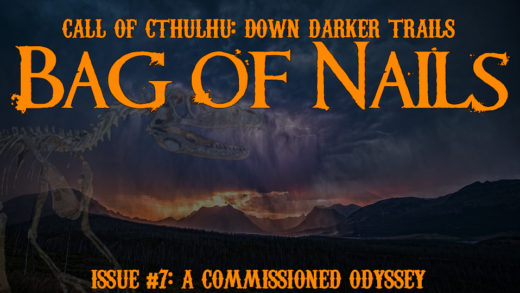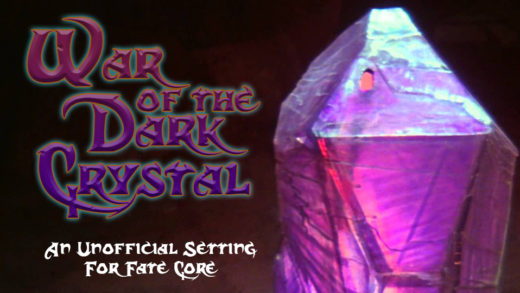Last week I wrote about some of the key components of a heist game and mentioned that a heist adventure could occur in any genre. However, each setting and style of game presents unique components to a heist adventure. This week I take a look at some of the more popular RPG genres and how they might affect a heist. Also included are some looks at group dynamics and alternatives within the heist adventure genre.
Modern
This is the standard setting for most heist games and there is a plethora of media (movies, TV shows, novels, and RPGs) that utilize heist adventures in a modern world. Common modern setting heists pit players against casinos, banks, corporations, museums, and mansions. For a change of pace consider yachts/cruise ships, conventions, or hotels. Also, if running a one-shot, tweak the modern setting a decade or so back; with the changes in technology, a heist in the 60’s, 70’s, or 80’s can be a very different adventure than a heist in the 00’s or 10’s.
Cyberpunk/Near-Future
The second-most common setting for heists is in the cyberpunk genre. A great deal of Cyberpunk 2020 and Shadowrun adventures are heist-like in nature. Unlike most heists, gunplay is a bit more common and I encourage GMs to increase challenges by putting more civilians in the line of fire with stipulations to not harm non-combatants. This can be done by moving heists away from corporate safehouses and structures and into more 24-hour public settings like archologies, hotels, or perhaps even restaurant/bars owned by the wealthy. Shadowrun, with magic and races, also incorporates some of the challenges presented in a fantasy heist.
Space/Far-Future
High technology can present some new challenges and options for a heist. Here, even the more commonplace heist settings can feel exotic. In space, the getaway isn’t just down the street; it can result in a chase through multiple star systems and planets. Depending on the game, players may also be or have to deal with unique alien races with powers and abilities not normally thought of for standard heist adventures. It’s important to keep in mind that most security will have been put in place for these various races and this could be considered for both strengths and weaknesses of a vault.
Western
Westerns are more known for bank jobs and robberies than actual heists, but a creative GM can add more challenges when incorporating a plot against The Mark. When it comes to the getaway, a heist/chase will almost always involve horses; these animals may provide ample opportunity for misfortune and reversals. Many western RPG settings also feature more than a little steampunk, magic, and horror, which can change the stakes and challenges, allowing for some unique genre-mashing options within a heist style adventure.
Post-Apocalyptic
Like westerns, there aren’t many calls for heists in the post-apocalypse. However, here the score could be something as simple as goods for survival, against a powerful individual or group that appears to have everything. Also consider creating a heist against outlaws/raiders that are far too strong to attack directly, but keep their stolen goods in a single, guarded and locked location. The post-apocalypse setting may also utilize surprising and strange technology that can be used for or against player characters.
Fantasy
Fantasy, especially high fantasy, can involve many unique challenges including guard monsters, magical locks, and more liberally used poison traps. Consider using racial advantages and magic when planning security. An orc fighter and elf sorcerer guard pair with a gnome illusionist supervisor can be an effective challenge, but pitting racial stereotypes against the player can be a great way to add reversals (like, maybe that orc wasn’t the physical challenge–they actually were psionic). Like cyberpunk, the GM challenge will be to ensure players don’t go in fireballs blazing or treating a heist like a dungeon. So, in addition to the fantastical challenges, make sure players have limitations that prevent them from indiscriminate devastation.
Supers
In a “4-color” superhero game, it’s not likely that the PC super heroes will participate in a heist (but they might be security; see below). However, heists can still be performed by players in the universe of super heroes–either as super villains, mooks, or lower-powered characters. Here, the additional challenges will be against others with super abilities in conjunction with modern and surprise super/high-tech defenses.
Horror
Heist and horror are two great tastes, but they’re not like peanut butter and chocolate; it takes a lot more balance for a heist to work within a horror setting. The easiest solution for incorporating horror into a heist is to make The Score itself an ancient evil that either wants to be stolen or provides its own psychological defenses (because it’s simply chaotic/evil). Other options to utilize horror within a heist are to have the item in a haunted area or for the race against time or rivals to be monsters themselves. Again, horror and a heist are a tricky balance and a GM should know their players well before attempting.
The Heist with Non-Heist Characters
If planning to include a heist within a current campaign and the characters aren’t necessarily built for heists, it’s important to tailor the adventure against their skillsets. This may mean ignoring some standard heist tropes in favor of presenting more character-specific challenges. However, a heist shouldn’t feel like a dungeon and it shouldn’t be combat-focused. For some groups a heist just won’t feel right, but sometimes changing the parameters/security of an adventure can transform a more dungeon-y challenge into a mansion heist or similar.
Small Group
Fewer players may mean fewer overall skills available to the team. It’s better and more fun to tailor player challenges to the actual PCs than forcing them to rely on NPCs. That said, for smaller groups, having one challenge where they are required to recruit an NPC can create the opportunity to have a fun, new, reoccurring character to the roster.
Large Group
Ocean’s Eleven may work well as a movie, but a large group can be a bigger challenge when creating a heist adventure than a small group. Here, skills will often overlap in many areas while possibly being deficient/void in others. Adding a new NPC into a large group can make the adventure seem more saturated. I suggest, in large group scenarios, to restrict the majority of challenges to skillsets that are group related or require multiple people with different skills working at once in order for the heist to go off. For example, it may be that a character will need to be at a door and another character in the control room in order to access a vault (ideally, with multiple characters also working together in each split). Heists will almost always require party splits; large groups should demand it.
The Reverse-Heist
The reverse-heist is a way to incorporate heist ideas for a more heroic bunch of characters. A reverse-heist involves putting something back without being discovered. For the greatest impact, this usually puts a spin on The Mark type of heist, wherein characters need the item to be returned under cover of darkness in order to protect an ally/friend, not to bring someone down. All the components of a heist are still there, but with the added challenge of not going into the heist empty-handed (the item to “un-steal”) and typically still needing to take something out (the fraud/decoy item placed there by another).
As Security
If the PCs are the “knights in shining armor” types, then consider using the idea of rivals in a heist as challenges for the players as security to an object/person. Here, the GM will have NPCs scouting and planning, and it will be up to the player characters to spot and thwart potential thieves. This is a “tower defense” type of game on a smaller, sneakier scale.
As The Mark(s)
If the goal of security is to thwart a heist, then players, as The Mark, will be dealing with the repercussions of being the target of a heist. Something important to them will be stolen or their reputation will take a severe hit and it will be up to the PCs to regain their credibility or exact revenge. This is one of those rare cases where GMs can run two different groups (or play two different games) against each other, with each PC group fighting the other through heists, rather than combat. If your PCs have become too powerful, consider running a one-shot game in which the players (unbeknownst to themselves) actually run a heist on their primary characters of the core campaign. This can create unique situations where, if the game is run well, players will welcome the loss of power thanks to an exciting game where they didn’t realizing they were “hurting themselves.”



Recent Comments